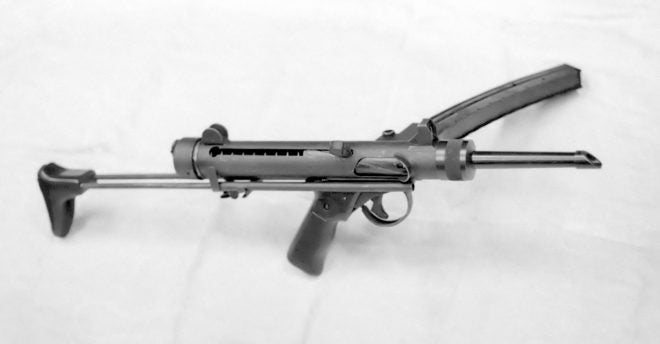Among the few South American countries that make firearms, Chile is generally well known for its SIG-based 7.62x51mm (SG 542-1) and 5.56x45mm (SG 540-1) rifles, plus 9x19mm and .40S&W submachine guns (SAF, Mini SAF, and SAF 200). The whole operation is in the hands of State-owned FAMAE – Fábricas y Maestranzas del Ejército (Army Factories and Workshops), which was originally born within the military structure. Friar – and, later, also Army Lieutenant Colonel! — Luis Beltran y Bustos founded it in the capital city of Santiago back in 1811, and over the years it has contributed to the country’s industrialization process. In the 1920s and 1930s, for example, production and commercialization included agricultural and railroad machinery, while in the WWII period home appliance items were included in the list.
After a military “coup d’etat” overthrew leftist President Salvador Allende in September, 1973, a long period of tough political repression led by Army General Augusto Pinochet resulted in repeated civil-rights-violation protests from around the world. As it is customary under the same circumstances, an embargo on the supply of arms was imposed on Chile by many countries (the U.S. did so in February, 1976), and this led to another commonplace: the nation embarked on a wide program to develop its own military hardware.
As time went by – and the international boycott got tighter – the country gradually managed to establish a state-owned and private military industrial complex to meet internal requirements and, at a later stage, compete with former suppliers in the international market. A case in point is the fact that Chilean products were reportedly used against U.S. and Coalition forces during the Gulf War. Locally-made equipment now range from hand grenades and mortars to airborne cluster bombs, armored vehicles and mobile artillery rocket systems.
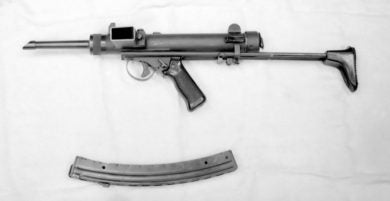
FAMAE’s earliest SMG design was clearly based on the British Sterling, with minor differences here and there.
By the mid-1970s, FAMAE had started developing an indigenous small arms manufacturing capability, and the initial step was the creation of a submachine gun for possible adoption by the local forces. Apparently in order to save both time and development costs, what eventually emerged was a very close copy of the British Sterling SMG.
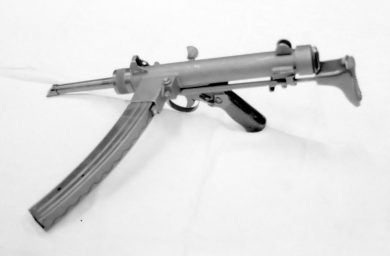
The side-mounted 34-round curved magazine gives the PAF a clumsy appearance. Gun is seen here with the wire buttstock retracted.
Chambered for the 9x19mm cartridge and simply called the PAF (Pistola Ametralladora FAMAE, or FAMAE Machine Pistol), the weapon was fed by a curved 34-round box magazine fitted into the left side of the cylindrical receiver, This, however, did not extend all the way forward to form a perforated sleeve around the 175mm barrel, but left most of it exposed past the mounting nut. The muzzle had a small spoon-shaped compensator.
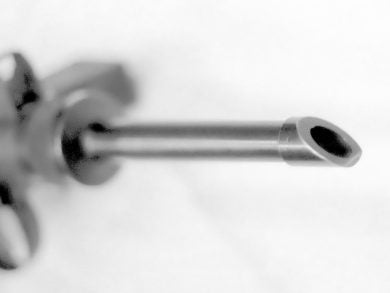
Like similar spoon-shaped compensators, the tiny one fitted to the Chilean gun was intended to direct muzzle gases so as to counter the SMG’s muzzle climb tendency, mainly in full-auto. Similar devices can be found in several AK rifle variants, for instance.
Weighing about 2.5kg and with a reported cyclic rate of fire in the region of 800-850 rounds per minute (somehow, higher than the Sterling’s 550 rpm), the first Chilean subgun featured a plastic pistol grip with pronounced forward rake, a fire selector lever on its left side, a large-diameter recoil spring, deep spiral dirt-cleaning grooves on the bolt surface, and the cocking handle about 45 degrees to the right, just like the inspiring gun. The stock, however, departed from the Sterling influence, being of the two-wire, retracting type with a plastic buttplate. Only a small lot of toolroom-made prototypes were ever completed, but they proved useful enough as a basis for an indigenous design.
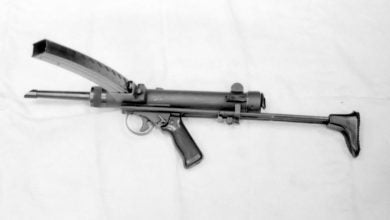
Another view of the FAMAE subgun, buttstock extended.
During a visit to FAMAE back in January, 1995, I was told that virtually all of them had been scrapped. My noticeable dismay at that apparent disregard to history, following by much insistence in photographing at least one example, bore fruit: parts scattered around a workshop were finally put together, thus allowing me to take the rare pictures that TFB is proud to show you now. Enjoy!
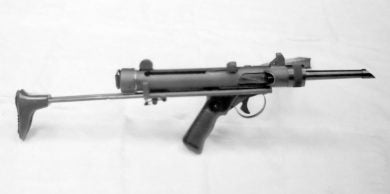
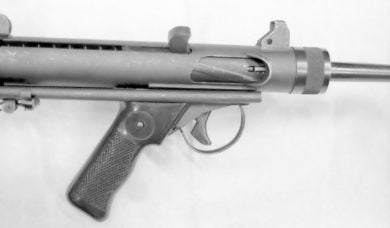
Right-side views of the PAF. In the bottom photo, the wide, twisted grooves machined on the bolt’s surface can be seen through the ejection window. Intention of that is to funnel dirt and debris clear of the action, and it comes directly from the Sterling SMG.
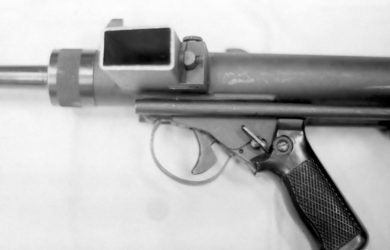
This close-up view of the Chilean gun shows the magazine well, trigger area, and the fire selector lever (Safe/Fire) near the grip.
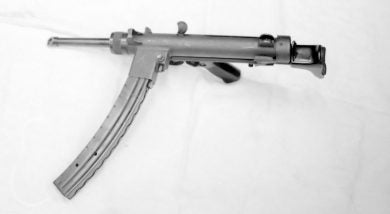
A departing image of Chile’s pioneer PAF submachine gun.“Hasta la vista, baby!”
 Your Privacy Choices
Your Privacy Choices
